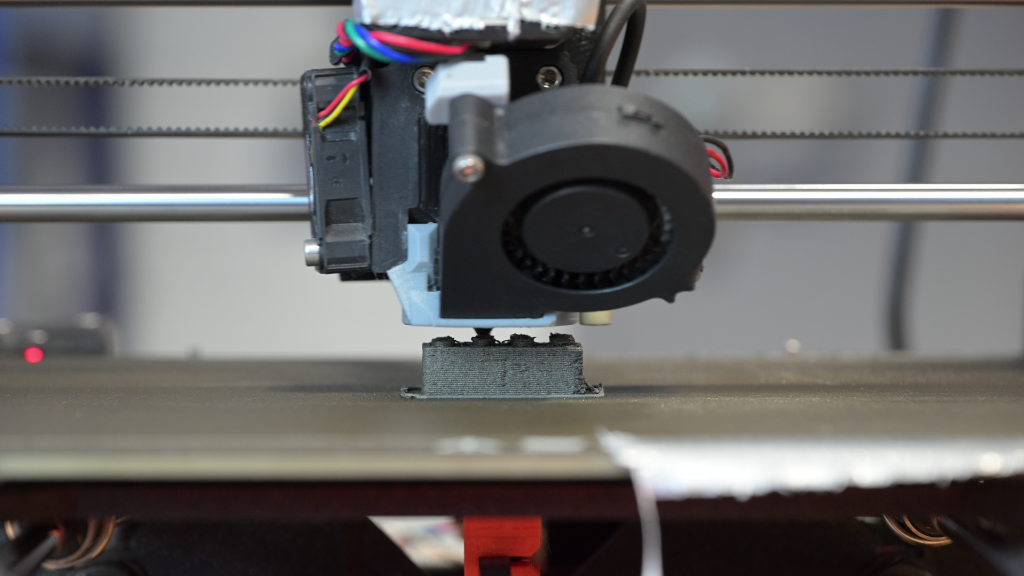While the size and shape of a LEGO brick are not easy to 3D-print, it demonstrates the process’s precision and fine-tuning, and has become a common test for this kind of project. The printing showcases the ability to make interlocking bricks, which is essential for building surface infrastructure, like habitat walls, on the Moon.
Yet the bricks crafted by teams on Earth hold another space-related surprise: in addition to lunar regolith, they are made from special dust sourced from a 4.5-billion-year-old meteorite – LEGO space bricks 3D-printed on Earth.

3D-printing a LEGO brick from lunar regolith and meteor dust at ESA’s European Astronaut Centre. Credits: ESA
The teams at Spaceship EAC are focusing on In-Situ Resource Utilisation (ISRU) for sustainable living and working on the Moon. These methods involve using materials already available on the Moon for construction, such as Moon dust, or regolith, and extracting oxygen or metals from it. This avoids the need to transport these supplies from Earth, which would take much longer and be far more costly.
Spaceship EAC produced a special batch of bricks in collaboration with LEGO to highlight this technology to a broader audience, inspiring curiosity and interest in younger generations. These bricks will be on display this summer in various LEGO stores around the world.
Spaceship EAC is based at the European Astronaut Centre (EAC) in Cologne, Germany. With teams mainly composed of early-stage researchers, their activities focus on areas relevant to human spaceflight and future lunar exploration, developing new technologies for living and working on the Moon.
Exploring our closest neighbour can help us understand the origins of Earth and our Solar System and send sustainable missions to Mars and beyond. With the upcoming Artemis missions, ESA and its partner agencies plan to land humans on the Moon again and build the Gateway space station to carry out science in lunar orbit.



